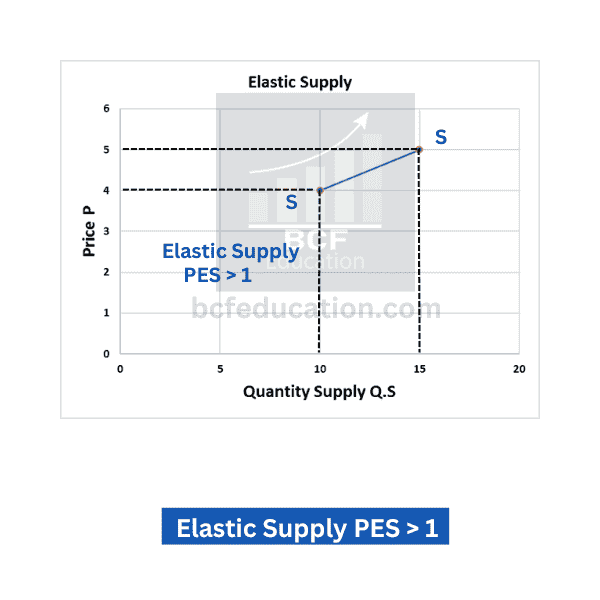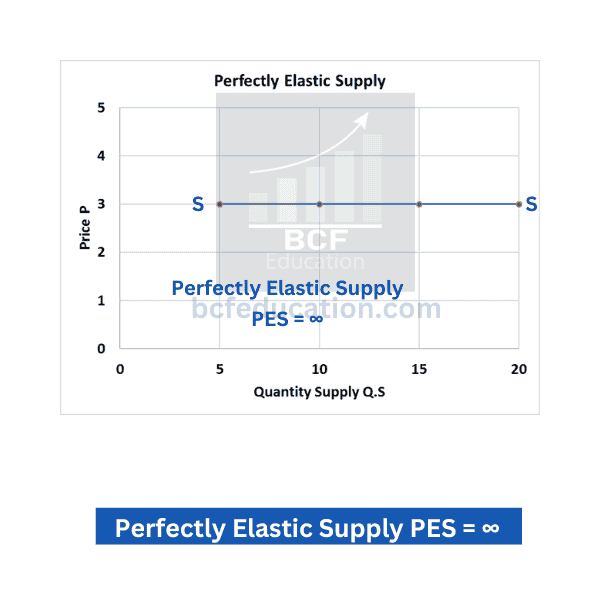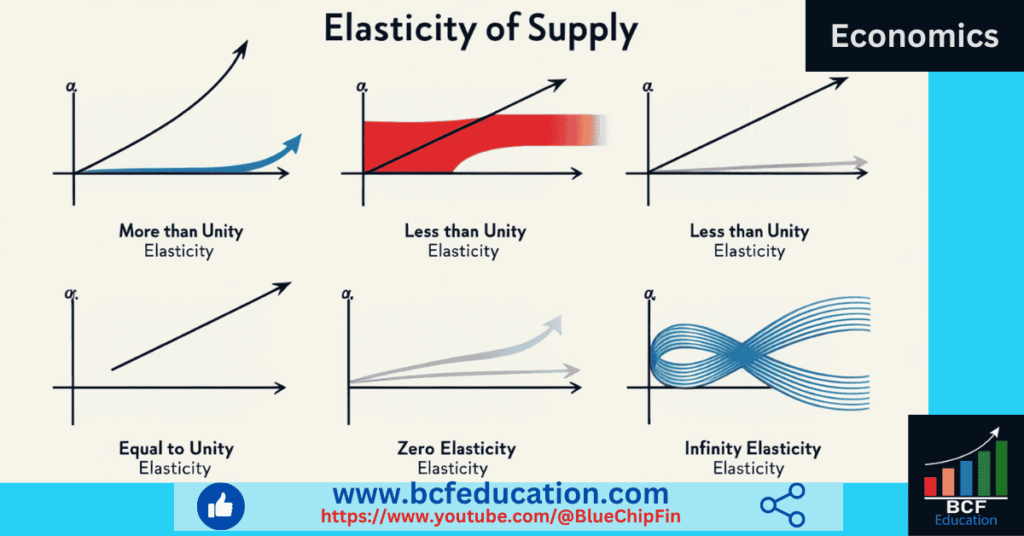“Explore the concept of Elasticity of Supply, a fundamental topic in microeconomics. This blog post delves into the definition, types, and determinants of supply elasticity, explaining how producers respond to price changes in the market. Perfect for students of economics, business, and finance, this comprehensive guide provides clear explanations, real-world examples, and insights into the significance of elasticity of supply in decision-making processes. Whether you’re a learner or an enthusiast, gain a deeper understanding of this critical economic principle and its applications!”. This topic is equally important for the students of economics across all the major Boards and Universities such as FBISE, BISERWP, BISELHR, MU, DU, PU, NCERT, CBSE & others & across all the business & finance disciplines.
Table of Contents
Elasticity of Supply
Elasticity of supply also means price elasticity of supply PES is a measure of percentage change in quantity supply with respect to percentage change in price. Here percentage change in quantity supply is denoted by ∆Q and percentage change in price is ∆P. Its formula is given below:
![]()
As we discussed above that ∆Q is change in quantity supplied and ∆P is change in price, whereas P is initial price and Q is initial quantity supplied.
Elasticity of supply has following five types given below:
1. Elastic Supply (PES > 1)
2. Inelastic Supply (PES < 1)
3. Unitary Elastic Supply (PES = 1)
4. Perfectly Inelastic Supply (PES = 0)
5. Perfectly Elastic Supply (PES = ∞)
1. Elastic Supply (PES > 1)
When percentage change in quantity supply is more than the percentage change in the price, the elasticity of supply will be greater than one and it is called elastic supply. For further explanation follow the example below:
| Price (P) | Quantity Supply (Q.S or Q) |
| 4 | 10 |
| 5 | 15 |
![]()
![]()
![]()
![]()
Figure Elastic Supply

2. Inelastic Supply (PES < 1)
When percentage change in quantity supply is less than the percentage change in the price, the elasticity of supply will be less than one and it is called inelastic supply. For further explanation follow the example below:
| Price (P) | Quantity Supply (Q.S or Q) |
| 10 | 2 |
| 20 | 3 |
![]()
![]()
![]()
![]()

Figure Inelastic Supply

3. Unitary Elastic Supply (PES = 1)
When percentage change in quantity supply is equal to the percentage change in the price, the elasticity of supply will be greater than one and it is called elastic supply. For further explanation follow the example below:
| Price (P) | Quantity Supply (Q.S or Q) |
| 2 | 10 |
| 4 | 20 |
![]()
![]()
![]()
![]()
Figure Unitary Elastic Supply

4. Perfectly Inelastic Supply (PES = 0)
When quantity supply remains constant with respect to continuous change in the price, the elasticity of supply will be zero and it is called perfectly inelastic supply. For further explanation follow the example below:
| Price (P) | Quantity Supply (Q.S or Q) |
| 2 | 10 |
| 3 | 10 |
| 4 | 10 |
| 5 | 10 |
![]()
![]()
![]()
![]()
Figure Perfectly Inelastic Supply

5. Perfectly Elastic Supply (PES = ∞)
When quantity supply continuously changes with respect to no or constant change in the price, the elasticity of supply will be infinity and it is called perfectly elastic supply. For further explanation follow the example below:
| Price (P) | Quantity Supply (Q.S or Q) |
| 3 | 5 |
| 3 | 10 |
| 3 | 15 |
| 3 | 20 |
Figure Perfectly Elastic Supply

Related Posts
Evolving different thoughts of Economics
2.1 Theory of Consumer Behaviour
2.2 Total Utility, Marginal Utility, Point of Satiety & Types of Utilities
2.3 The Law of Diminishing Marginal Utility DMU
2.4 The Law of Equal Marginal Utility EMU
3.1 Demand, Individual Demand, Aggregate Demand, Law of Demand
3.2 Change and Shift in Demand, Extension and Contraction in Demand, Rise and Fall in Demand
3.4 Point and Arc Elasticity of Demand





